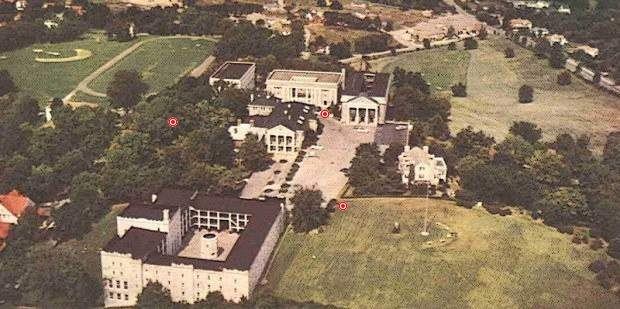Established 1860 Disestablished 1976 Motto Truth - Duty - Honor Color Blue and Gold | Information 540-885-1309 Founded 1860 | |
 | ||
Grades (7-8 junior school) 9-12 | ||
Staunton military academy reunion presentation clip
Staunton Military Academy was an all-male military academy located in Staunton, Virginia for much of its 116-year history. The school closed in 1976. Many notable American political and military leaders are graduates. A museum of the school's history is located on the Mary Baldwin College campus.
Contents
- Staunton military academy reunion presentation clip
- Staunton military academy history
- History
- Staunton Military Academy today
- Campus
- Faculty
- Extracurricular activities
- Notable alumni
- References
Staunton military academy history
History
Charlestown Male Academy was founded in September 1860, by William Hartman Kable (1837-1912) at Charles Town, Jefferson County, Virginia (now West Virginia). At the start of the American Civil War William Kable joined the Confederate Army and served with distinction as a Captain in the 10th Virginia Cavalry (CSA). After the war, Captain Kable re-established his school at its original location. During this time period the school was known to the townspeople as The Kable School and its cadets were known as the "Kable boys".
In 1883, the school moved to Staunton, Virginia and became Staunton Male Academy. Captain Kable bought the site on the hill from a Mr. Alby, a prominent businessman. Acquisition of other large areas of land near the Alby estate continued until 1910. The school adopted the military system in 1886 and changed its name to Staunton Military Academy, or SMA, following by incorporation in 1893.

In 1900, Captain Kable turned over management of the school to his son, Colonel William Gibbs Kable (1872-1920). Colonel Kable proved to be very capable in school building and school management. He was a firm believer in advertising and used this medium extensively to bring the attention of the school to the public.

In November 1904, a fire destroyed the entire establishment, except for the founder's home and the old school hospital. Both barracks burned to the ground, but because of the brave and swift action of all involved, not a single life was lost. Following the fire, development of the campus was rapid: the South Barracks were completed in 214 days in 1905, the Mess Hall was constructed in 1913 on the site of the original mess hall, and the North Barracks were completed in 1918. By the 1930s, the campus also boasted Kable Hall, Memorial Hall, West Barracks, and the Superintendent's home.

In 1917, the Academy became an official unit of the Junior Reserve Officers' Training Corps (JROTC) Program. Two Regular Army First Sergeants were assigned to provide military instruction. The school survived the Great Depression and later prospered, becoming one of the country's most prestigious military preparatory schools. Situated on the Hill with an enrollment that exceeded 600 cadets, SMA grew into a strong economic force in the Staunton community. In addition, the cadets often participated in parades at various occasions in Staunton and neighboring towns.
With the 1960s came a new generation, geared to permissiveness and nonconformity, rather than regimentation and discretion. The fallout from Vietnam helped perpetuate an anti-military sentiment that further eroded enrollments at military schools throughout the country. Despite the best efforts of a dedicated and talented faculty and staff, inflation and unemployment weakened the schools finances in the early 1970s.

Faced with the prospect of bankruptcy, the Kable family elected to sell the academy. The new owner, Layne Loeffler, changed SMA's charter to non-profit status when he took over the school in 1973, but it was too late. The deteriorating situation, combined with management problems, forced the academy to close in 1976, some 116 years after its founding. Mary Baldwin College, SMA's longtime neighbor and "big sister," bought the property for $1.1 million in a bankruptcy sale.
Staunton Military Academy today
Today, many of the buildings where SMA cadets lived and learned are still used by Mary Baldwin. The SMA Mess Hall sign still hangs over the entrance to the building, now called the Student Activities Center. The military legacy of the academy's grounds continues through the college's Virginia Women's Institute for Leadership (VWIL), the only all-women's corps of cadets in the world.
In 2001, a joint SMA-VWIL museum opened in the former SMA supply room at 227 Kable Street in Staunton. Additionally, the alumni association has endowed four scholarships to keep SMA's legacy alive: the SMA Leadership Scholarship, the Henry Scholarship Honoring SMA, and the Henry SMA Legacy Scholarship for VWIL cadets, and the SMA-John Deal Education Scholarship for a Florida State University student.
In April of each year an SMA all class reunion is held in Staunton. Events include an "Old Boys" parade on Friday afternoon in conjunction with VWIL on the former SMA parade field, and a banquet on Saturday night.
Campus
Faculty
Notable faculty include:
Extracurricular activities
Staunton Military Academy sports teams played other prep schools, college freshman teams and even college teams, such as The Apprentice School Builders, who reported a 4-5-1 football record with SMA. The academy also had a group known as the Howie Rifles, a nationally known drill team.
